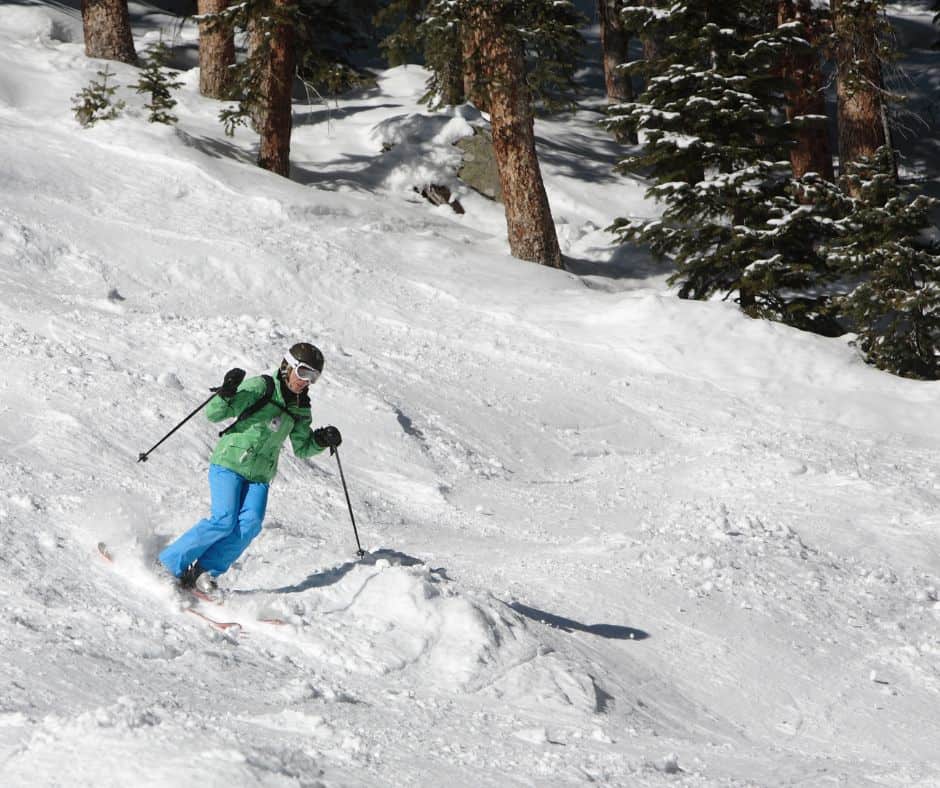MCL Injury
Read More >
The mechanism that injures an ACL is a high force with a sudden change of speed, direction or knee rotation. ACL tears are, therefore, prevalent in sports that are more likely to generate this mechanism.
Contact sports and those with a high impact with rotational landing are most at risk. Three sports are most at risk of this injury: football/soccer, skiing, basketball and gymnastics.
Prevalence between men and women varies depending on the sport. Men are more at risk of ACL injuries than women in contact sports, while women are more likely in high-impact rotation landing sports such as gymnastics (Montalvo et al, 2019).
ACL injuries in football are common due to the movements of the players and the way the game is played. The sport requires sudden changes in speed and direction. Therefore, the knee joint has to cope with high acceleration, deceleration, and rotational forces.
A frequent factor in the cause of an ACL injury in soccer is that the foot was planted on the ground. Players wear studded shoes or football cleats to have a better grip when doing these fast actions on the grass.
Unfortunately, if the foot is fixed to the floor and a strong force is applied to the leg, more than the knee can cope with, there is no release of this through the foot if it is gripped to the floor with studs. This is a common cause of an ACL tear in football.

You will not be able to play football, and it is not recommended to try to play, with a torn ACL. If the ACL tear is minor it may only be a few weeks of rest and recovery until you can return to play. But with higher grade tears it may take up to 3 months.
Surgery is offered to those who have a complete, or near-complete, rupture and this will further lengthen the time to return to playing football.
Return to soccer after ACL surgery is a long process taking 9-12 months and in some cases longer. 83% of elite athletes return to play and the surgical graft ruptured in 5.2% (Lai et al, 2018).
Soccer players with ACL injuries who have returned to play after surgery include Roy Keane, Francesco Totti, Xavi, and Alessandro del Piero.
There is comparatively little evidence for the management of ACL rupture without surgery for elite footballers, but as this case report discusses it can be a viable option.
This English Premier League football player returned to play just 8 weeks after a complete ACL rupture (Weiler et al, 2015).

Unfortunately, skiing is a sport with a high prevalence of injuries per time practised. The most common ski injury is a knee injury skiing.
Of all the knee injuries, ACL tears are the most likely skiing knee injury.
Many people get general knee pain after skiing. This is often due to the positions held and the duration.
Another factor is that for many people, it isn’t a sport they do daily or weekly. People often go skiing for a holiday and ski for several hours per day on consecutive days.
This means that their body is not conditioned explicitly to the sport.
General knee pain is different from getting an ACL injury while skiing. ACL injuries are caused by high impact, often from a fall or collision.
Typically ACL injuries occur from a twisted knee skiing with the addition of high force. This can include a fall and landing awkwardly on the knee or the ski getting caught on the snow or another person’s ski and twisting the knee as the body continues to move.
Skiing with a torn ACL is not recommended. A low-grade injury may only need a few weeks of rest, but higher-grade injuries need 4-8 weeks or longer.
If the ACL is injured even minorly, it will provide poor control of the knee and poor proprioception; it is at a far greater risk of further damage.
If you choose to ski with an ACL injury, consider an ACL Knee brace.
As skiing is a high-risk sport for knee injuries and ACL tears, in particular, it is useful to do your utmost to protect your knee. There are two ways you can protect your knee.

With the correct management and treatment, most people can return to skiing in about 9 months. To return to skiing safely after ACL surgery you must be dedicated to your rehabilitation exercises and seek the advice of an experienced physical therapist who can prepare you fully for skiing.
Sport-specific testing to ensure you are physically prepared to tolerate the stresses of skiing will significantly reduce your risk of re-injury.
For many people, there can be a fear of skiing after ACL surgery. Testing in the gym can help build confidence and a graded exposure in terms of ski slop difficulty can also really help.
Physiotherapy with James McCormack
This article is written by James McCormack, a Lower Limb Specialist who is an expert in treating ACL Injuries.
This is not medical advice. We recommend a consultation with a medical professional such as James McCormack if you are experiencing any of the symptoms discussed in this article. James offers Online Physiotherapy Appointments weekly and face-to-face appointments in his London clinic.